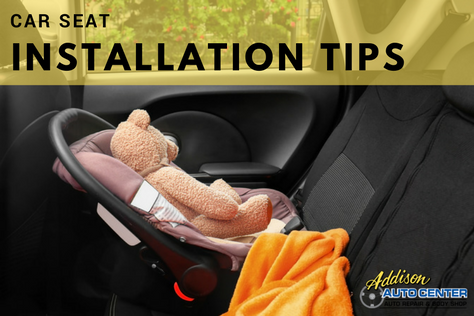With our next grandbaby coming soon, I decided to brush up on child seat installation. We had gotten training in the past, but I wanted to be sure I was doing things correctly. As I started reading, I came across a few startling facts.
According to Safe Kids Worldwide, Road injuries are the leading cause of preventable deaths and injuries to children in the United States. For more on what to do when you are in an auto accident, read our blog article Auto Accident: Clear Thinking And Attention To Detail Can Save You Time and Money. Correctly used child safety seats can reduce the risk of death by as much as 71%. Three out four car seats are not used or installed correctly.

So where do you start in making sure the child seat is installed safely and correctly. First of all, familiarize yourself with the car seat owner’s manual. However after writing this, I looked up an instruction manual for a Britax Advocate 70G3 seat, and the manual was 42 pages long. Yikes! Also, consult the vehicle owner manual child safety seat section.
I then started looking for some good video instructions and found the ones at AAA to be easy to understand. This site also has a link to the NHTSA website where you can find certified technicians who will inspect the seat and installation.
There are basically 4 types of seats:
- Rear Facing, for up to about 2 years old.
- Forward facing for when the child outgrows the rear facing.
- Convertible can be used either forward or rear facing.
- Booster seat.
With the exception of booster seats, all seats must be tightly secured with a seatbelt or lower anchors. It should not move more than an inch. The center of the rear seat is the safest location, but some vehicles don’t have lower anchors in that position. In that case, the seat should be secured with the seatbelt. The most common seatbelt design is such that the belt needs to be pulled all the way out and then ratcheted back in until it holds the seat tight. There are a couple of different designs of belts, so look at your vehicle’s owner manual. Also, some safety seats have a lock off that clamps on the belt, eliminating the need to ratchet in the seatbelt.

The five-point harness should be adjusted snuggly so that you can’t pinch any slack (see video). For rear-facing, the shoulder straps should be just below shoulder level in the back and for front facing, they should be slightly above shoulder level. The chest clip should be at armpit level.
So to recap: Read the car seat instructions, read the appropriate section in your vehicle’s manual, watch the videos, install the seat, and finally have a certified technician do an inspection.
Parents and grandparents: Check your child’s safety seat and have a great holiday season. And don’t forget when you no longer need the car seat, bring it to us for recycling.


